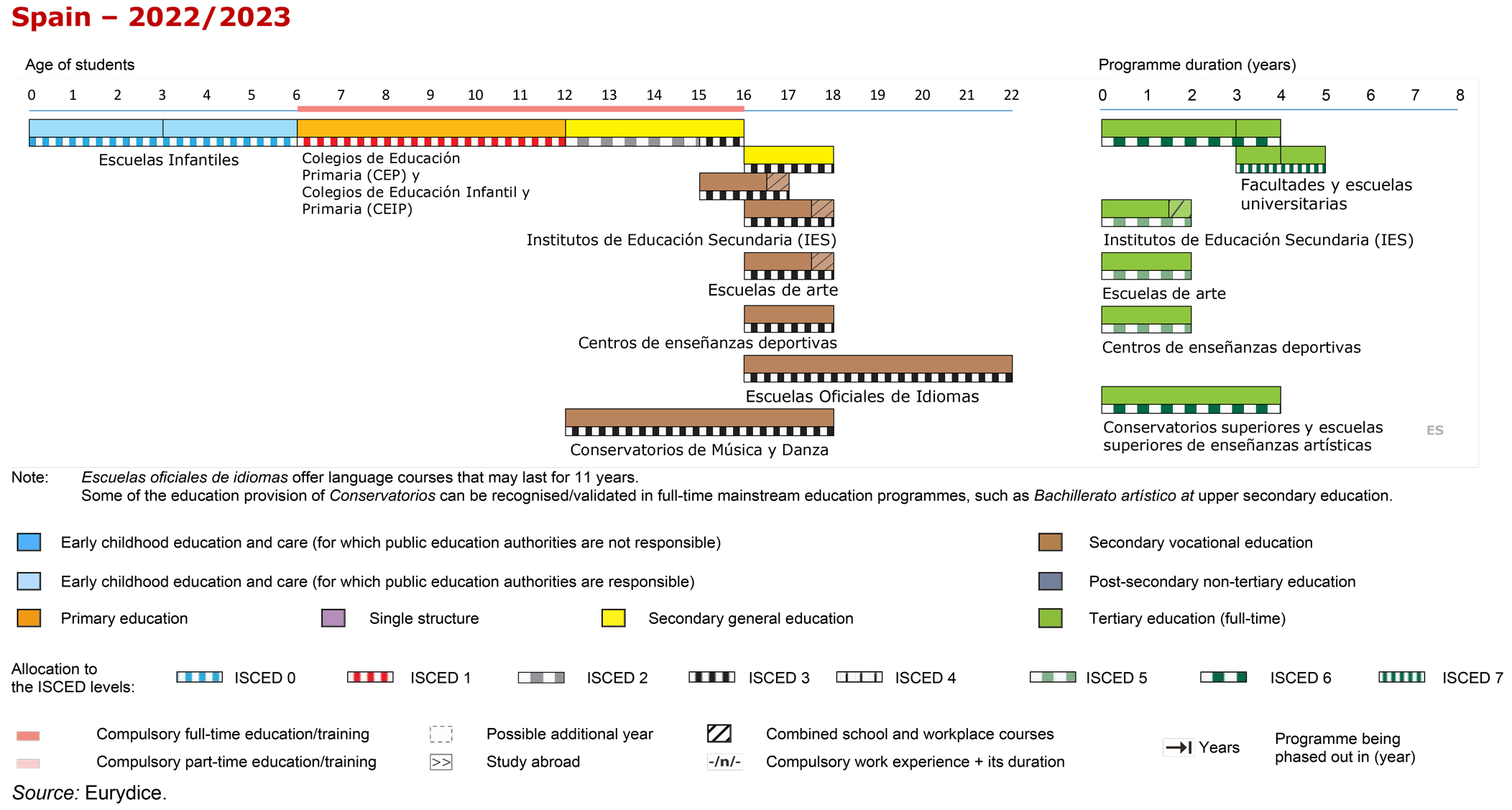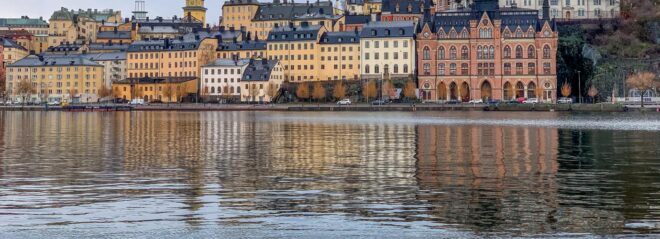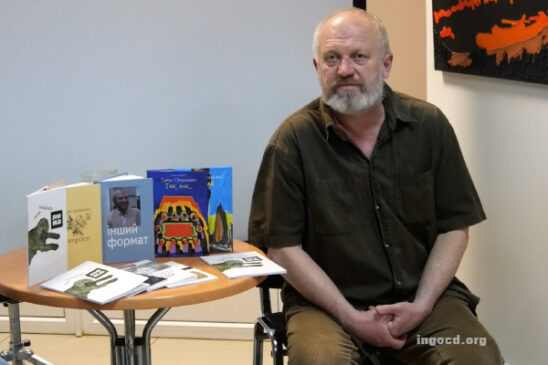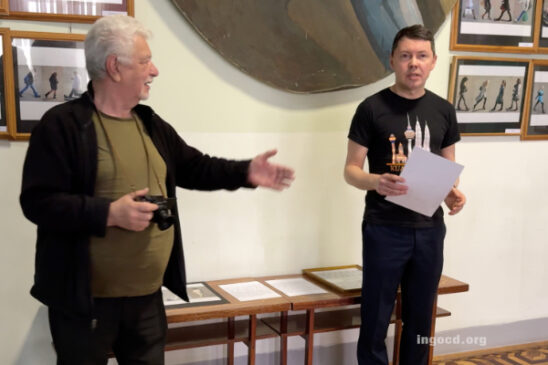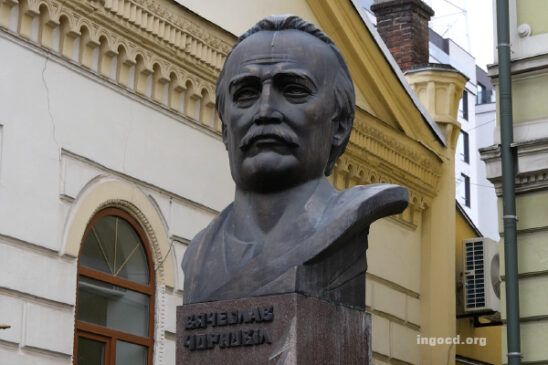Education in Spain
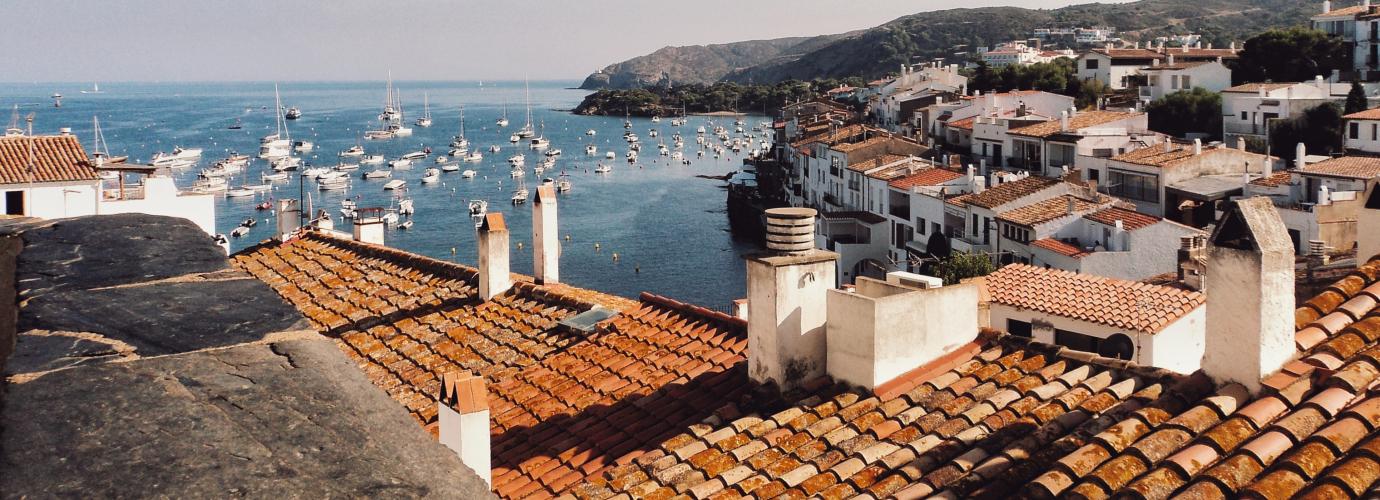
The Spanish education system comprises:
- the education authorities, education professionals and other public and private actors who perform regulatory, financing or service provision functions for the exercise of the right to education included in the 1978 Spanish Constitution;
- those entitled to the right to education;
- the set of relations, structures, measures and actions being implemented in order to ensure it.
Key features of the education system
The Organic Law on Education 2/2006 (LOE), in force since 2006, was modified by the Organic Law 3/2020 (LOMLOE) passed in 2020. The implementation of the amendments introduced by the LOMLOE started in the academic year 2020/21 and will end in the academic year 2023/24.
This reform acknowledges the best interests of the child and places children’s rights among the guiding principles of the system, promotes gender equality, encourages the continuous improvement of schools and the individualisation of learning, gives a central role to the development of digital competences and recognises the importance of education for sustainable development.
Main characteristics of the administration of the education system
Decentralisation: educational competences are shared between the General State Administration (Ministry of Education and Vocational Training) and the authorities of the autonomous communities (Departments for Education):
- the central education administration executes the general guidelines of the Government on education policy and regulates the basic elements or aspects of the system;
- regional education authorities develop the State regulations and have executive and administrative competences for managing the education system in their own territory.
Schools have pedagogical, organisational and managerial autonomy for their resources.
Participation of the education community in the schools’ organisation, governance, running and evaluation.
Organisation and structure
The LOMLOE has introduced important modifications in the organisation of the Spanish education system with the aim of modernising it, restoring the system’s equity and inclusiveness, improving results and increasing school success, as well as consolidating the education system as a basic pillar of knowledge policies.
Among the most important changes affecting the organisation, the following stand out:
- provision for an increase in the number of public places in the first cycle of pre-primary education (ISCED 01) to meet all schooling requests and regulation of the curriculum and minimum requirements for the entire stage;
- supression of the itineraries and the hierarchy between subjects in compulsory secondary education (ESO);
- curricular diversification programmes and basic training cycles from 3rd year of ESO onwards leading to the award of the ESO graduate certificate;
- modification of the promotion criteria;
- annual, census-based diagnostic assessments in the 4th year of primary education and 2nd year of ESO and general, sample-based and multi-annual assessments of the education system in the 6th year of primary education and 4th year of ESO. These evaluations will have no academic effect;
- changes in the administration and management of the education system: curriculum and distribution of competences, participation in the running and governance of schools, school autonomy, collegiate governing and coordinating bodies, management of public schools and evaluation of the education system;
- promotion of dual vocational training at all levels of vocational training.
Important challenges of the education system
Spain has prioritised the modernisation and flexibilisation of its education system:
- improving the level of competence of the entire student body, compensating for any initial disadvantages;
- regaining the equality lost during the crisis years;
- modernising Vocational Training and improving its enrolment and qualification rates;
- reducing early school drop-out and facilitating reintegration into the education system;
- updating the teaching profession to lead curricular and didactic innovation;
- improving the scope and quality of 0-3 education and its curriculum framework;
- making secondary education more flexible with more individual attention for educational achievement;
- increasing STEM vocations, especially among female students;
- guaranteeing education in civic values in order to enable the exercise of critical and participatory citizenship;
- guaranteeing an investment space in education and scholarships regardless of political alternation and economic circumstances.
Teaching staff characteristics
The minimum qualification level for basic education teachers in Spain ranges from a bachelor’s degree or equivalent (ISCED 6) for pre-primary and primary education to a master’s degree or equivalent (ISCED 7) for secondary education. The salary is higher than the average salary in the European Union (EU), however, the maximum increment is lower than the average and the time needed to reach that level is among the highest in the EU. Currently, a legislative proposal is being worked on to regulate, among other things, initial and continuous training, access to the profession and the development of the teaching career.
Training offer in the Education System
Early childhood education lasts until the age of 6. Although it is not a compulsory stage of education, the second cycle is free of charge in all institutions receiving public funding (public and publicly-funded privateinstitutions). The public institutions that provide this education are called nursery schools, and those which also offer primary education are called early childhood and primary schools.
Basic education is compulsory and provided free of charge in publicly funded institutions. It comprises ten years of schooling and consists of the following:
- Primary education, provided in primary schools. It consists of six academic years, normally between the ages of 6 and 12.
- Compulsory Secondary Education (ESO), which is provided in secondary schools between the ages of 12 and 16. At the end of this stage, students receive their first official qualification, the Compulsory Secondary Education Graduate diploma (Graduado en Educación Secundaria Obligatoria), which gives them access to upper secondary education or to the labour market.
- Basic level training cycles, which are offered in secondary education high schools between the ages of 15 and 17. Students who complete these courses receive a diploma as Graduate in Compulsory Secondary Education and the qualification of Basic Technician in the corresponding specialisation.
Upper secondary education is also mainly provided in secondary education high schools. It lasts two academic years, generally attended between the ages of 16 and 18. It offers students two possibilities, bachillerato (general option) and intermediate vocational training (vocational option). The latter is also offered in integrated vocational training institutions and in national reference centres.
Higher education comprises university studies and vocational studies. University studies are taught in universities and advanced vocational training is taught in the same institutions as intermediate vocational training.
Adult education (EPA) comprises different types of education offered by the educational, labour and local administrations in very different types of institutions. Face-to-face education leading to an official qualification in the education system are provided in mainstream institutions or in specific institutions for adult education. EPA is addressed to people over 18 years of age and, exceptionally, to people over 16 years of age who work and cannot attend ordinary schools, or who are high-performance athletes.
In addition to these types of education, the Spanish education system offers specialised education:
- Language education, which includes language teaching at levels A1, A2, B1, B2, C1 and C2 according to the Common European Framework of Reference for Languages (CEFR). These programmes are provided in the official language schools.
- Artistic education, which includes elementary music and dance education, professional artistic education and higher artistic education. These studies are delivered in different specific institutions, in accordance with each type and level of education.
- Sports education, organised into intermediate and higher training cycles and taught in the same institutions as vocational education.
Structure of the education system
Useful links
- Ministry of Education and Vocational Training (MEFP)
- Eurydice Spanish Unit (Eurydice España-REDIE) (MEFP)
- Spanish Education System Portal (MEFP)
- Education Statistics (MEFP)
- Education Legislation (MEFP)
- Publications (MEFP)
- Education Portals (MEFP)
- Education Policy Outlook Country Profiles: Spain (2018)
Source: https://eurydice.eacea.ec.europa.eu/national-education-systems/spain/overview
Follow us on social media: Facebook, Twitter, Instagram, YouTube.

